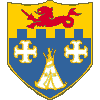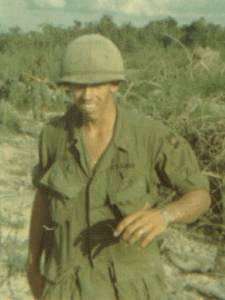Teddy Gene WhittonSpecialist FiveHHC, 4TH BN, 12TH INFANTRY, 199 INF BDE Army of the United States 04 May 1947 - 06 December 1967 Paragould, Arkansas Panel 31E Line 055 |


| |
  
|

|
The database page for Teddy Gene Whitton
|
"Doc" Teddy Whitton was a special Medic who gave his life trying to save lives of members of the 4 Bn, 12th Infantry, 199th Inf Bde, during a major battle north of Saigon on December 6th, 1967. Ted only had days to go before he was to leave county, however, he volunteered to go out to assist wounded members of A and B Companies, 4/12.
God Bless Ted and his family.
13 Nov 2004 It is now November 11, 2004 and I still remember "Doc" Ted Whitton as if it was just yesterday, yet the last day I saw him was on December 6, 1967. Ted left our base camp to go to the aid of the soldiers of the 199th as they fought a major battle somewhere north of Long Bien, Vietnam. Ted did not have to go that day as he was about to leave Vietnam but did so as he knew he would be needed by the wounded. We will always remember his giving his life to save others and pray for him and his family.
From a friend, |
A Note from The Virtual WallThe 199th Infantry Brigade arrived in Vietnam on 10 Dec 1966 and for nearly a year operated in the rice-paddy country around Saigon. That changed on 04 Dec 1967, when the Brigade established Fire Support Base NASHUA about 17 kilometers north of Bien Hoa Air Base. NASHUA was located in hill country that was covered with double- and triple-canopy jungle, an area which had been controlled by the Viet Cong for years. The 199th's move north was intended to locate and destroy NVA/VC forces and to disrupt the NVA/VC infrastructure. Although NASHUA itself was located in a relatively large cleared area near Ku Tru Mat village it was surrounded by jungle.Recon teams from F Co, 51st Infantry had begun conducting recon patrols several days before the four companies of the 1st Bn, 12th Infantry arrived by air assault on the morning of 04 Dec. By nightfall FSB NASHUA was a going concern; artillerymen from C Btry, 2/40th Artillery had their howitzers in place and D Troop, 17 Cavalry's armored personnel carriers had arrived by road march from FSB HANOVER, 12 kilometers to the southwest. On the morning of 05 Dec 1/12 began its patrols around the new fire base. While 1/12 had little contact on that day, two patrols from F/51 did make contact 4 kilometers south and southeast of NASHUA - and had one man killed in the contacts. At dawn on 06 Dec NASHUA received 20 to 25 mortar rounds from the southeast. The 1/12 commander responded by sending two platoons from Alpha 1/12 out to locate the mortar sites. Charlie 1/12 was sent on patrol to the west, Echo 1/12 was sent to the north, and 1/12's remaining forces concentrated on construction at the fire base itself. The enemy made their presence known by ambushing D/17 Cav's morning road-clearing patrol from FSB HANOVER. The ambush was initiated at a point where the cavalry's five ACAV vehicles were forced into column; the VC destroyed the leading and trailing ACAVs with command-detonated mines, leaving the remaining three trapped in a killing zone. 1/12 responded by airlifting two platoons from Bravo 1/12 into the area; the infantrymen dispersed the enemy but two cavalrymen had been killed and others wounded. After medevacing the dead and wounded the combined force turned back toward FSB HANOVER. As the day progressed both Echo 1/12 north of NASHUA and Alpha 1/12 to the southeast made contact with enemy forces. While Echo 1/12 encountered only small groups of NVA/VC (but enough to cost two dead), the 78 men from Alpha's two platoons ran into a hornet's nest - a well-constructed, well-manned VC battalion base camp hidden under triple-canopy jungle. Alpha 1/12's initial contact rapidly degenerated into a vicious close-range firefight, with Alpha's forward elements pinned in place and in desperate need of fire support and reinforcement. 1/12's ability to respond was limited - Charlie and Echo Companies were on patrol, 2 platoons from Bravo Company were with the ACAVs, and NASHUA itself could not be left undefended. Charlie and Echo were recalled, but could not be of immediate assistance. Five D/17 ACAVs and the remainder of Bravo Company moved out at 1515 [3:15 pm]. Outside reinforcements also were made available - Alpha Company 3/7 Infantry was airlifted to the north of the base camp with instructions to conduct a flanking attack to the south. Although helo gunships, fixed-wing aircraft, and artillery support all were available, their effectiveness was limited by the jungle canopy - who was where? - and the available munitions ... 20-millimeter strafing and 105mm howitzer high-explosive shells failed to make much impression on the enemy bunkers. The contact began and would continue as an infantry fight. Once Bravo 1/12 and the ACAVs linked up with the surviving elements of Alpha 1/12 (17 men of the original 78 were still functional) they were prepared to renew the attack. Because the two US elements - the 1/12 elements and Alpha 3/7 - were not in physical contact their movements had to be coordinated via radio. Attacking from the north, Alpha 3/7 did manage to penetrate to the center of the base camp before being forced to withdraw. The 1/12 attack did not penetrate the enemy's inner perimeter but did allow recovery of additional wounded before withdrawal. As night fell, the two groups established defensive perimeters and cut mini-landing zones so their dead and wounded could be evacuated. Although enemy assaults on the defensive perimeters were expected, they failed to materialize. At dawn on 07 Dec the base camp area received heavy attacks by air and artillery supporting fire, followed by a ground assault - but there were no live NVA/VC to be found. The enemy had withdrawn from the camp, disappearing into the jungle. They did leave 62 hastily buried bodies behind - and they had executed wounded Americans who had fallen within the base camp's perimeter. The fighting had cost the lives of 26 Americans - one from F/51 Infantry on 05 Dec, 24 killed in the actions on 06 Dec, and one who died of wounds on 07 Dec. The American dead were
Visit John Dennison's |
|
Top of Page
www.VirtualWall.org Back to |
With all respect
Jim Schueckler, former CW2, US Army
Ken Davis, Commander, United States Navy (Ret)
Memorial first published on 16 Dec 2001
Last updated 08/10/2009